
Biggest movers in mobile – the business of apps in 2022
The year 2021 demonstrated the amazing traction of mobile applications, which kept us nailed to the screen more than ever before. According to App Annies annual State of Mobile report, the global average of nearly 5 hours a day on a mobile device is split between business and leisure, but social media, photos, and video are the biggest attention grabbers.
The year 2021 demonstrated the amazing traction of mobile applications, which kept us nailed to the screen more than ever before. According to App Annies annual State of Mobile report, the global average of nearly 5 hours a day on a mobile device is split between business and leisure, but social media, photos, and video are the biggest attention grabbers.
Almost all major app categories have seen growth in 2021, with the strongest growth in the food and drinks category. There a motley crew of startups are drawing more and more people into home deliveries globally.
App Annie has been delighting mobile app analysts with their annual app insights report for years now. Their State of Mobile gives an excellent overview of the mobile market. App Annie’s dataset provides a tremendous amount of global insight: they publish data from up to 20 countries, depending on the metric.
App Annie’s data comes from leading app publishers, consumer usage data, and publicly available app market data. If you are interested in app trends in the Nordics and Western Europe, these are the insights you should be looking at.
Mobile use just keeps increasing
The pandemic has pushed the mobile addiction to new heights. In the Top 10 busiest markets, the global average was 4 hours 48 minutes of daily screen time for Android users!
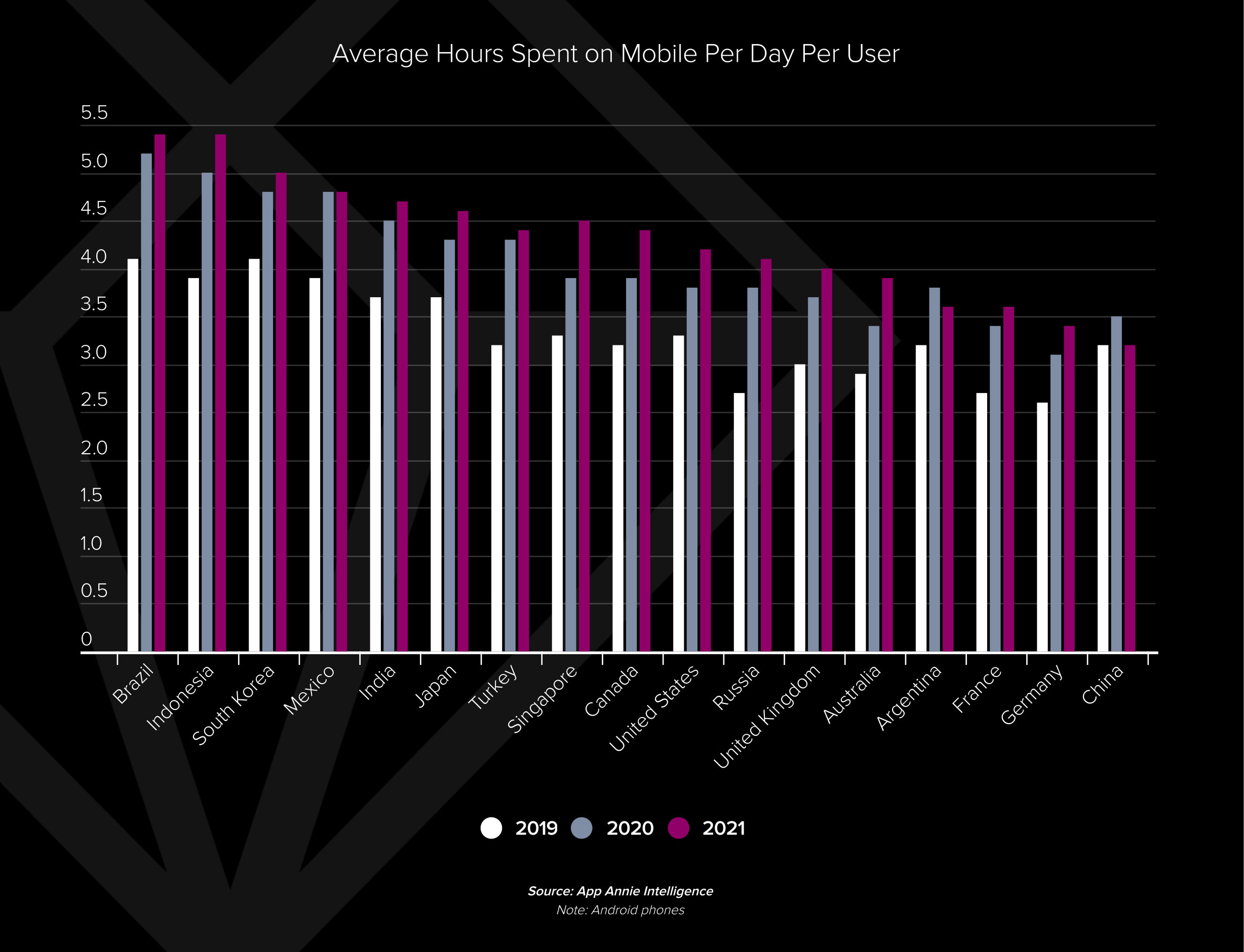
Source: App Annie State of Mobile 2022
This development has been going on for years now, but it is still surprising how the annual growth has continued in most of the measured markets. Only in China and Argentina did 2020 beat 2021, and 2021 wasn’t behind 2019 in these countries either.
Millions of apps, but only a few million-dollar apps
There is also more and more competition for users’ attention. Over 2 million apps were published in 2021 alone, adding up to a whopping total of 5.4 million apps in the iOS and Android ecosystems put together. Despite the initial advantage held by Apple, Android has double the number of apps today (3.6 million vs. 1.8 m).
Although the overall value exchanged over apps is tremendous, it is not distributed equally. There are some hippos that surpass $100 million in consumer spend, but they number only 233. That’s under 0.007% of all apps out there, showing how hard it is to make it big.
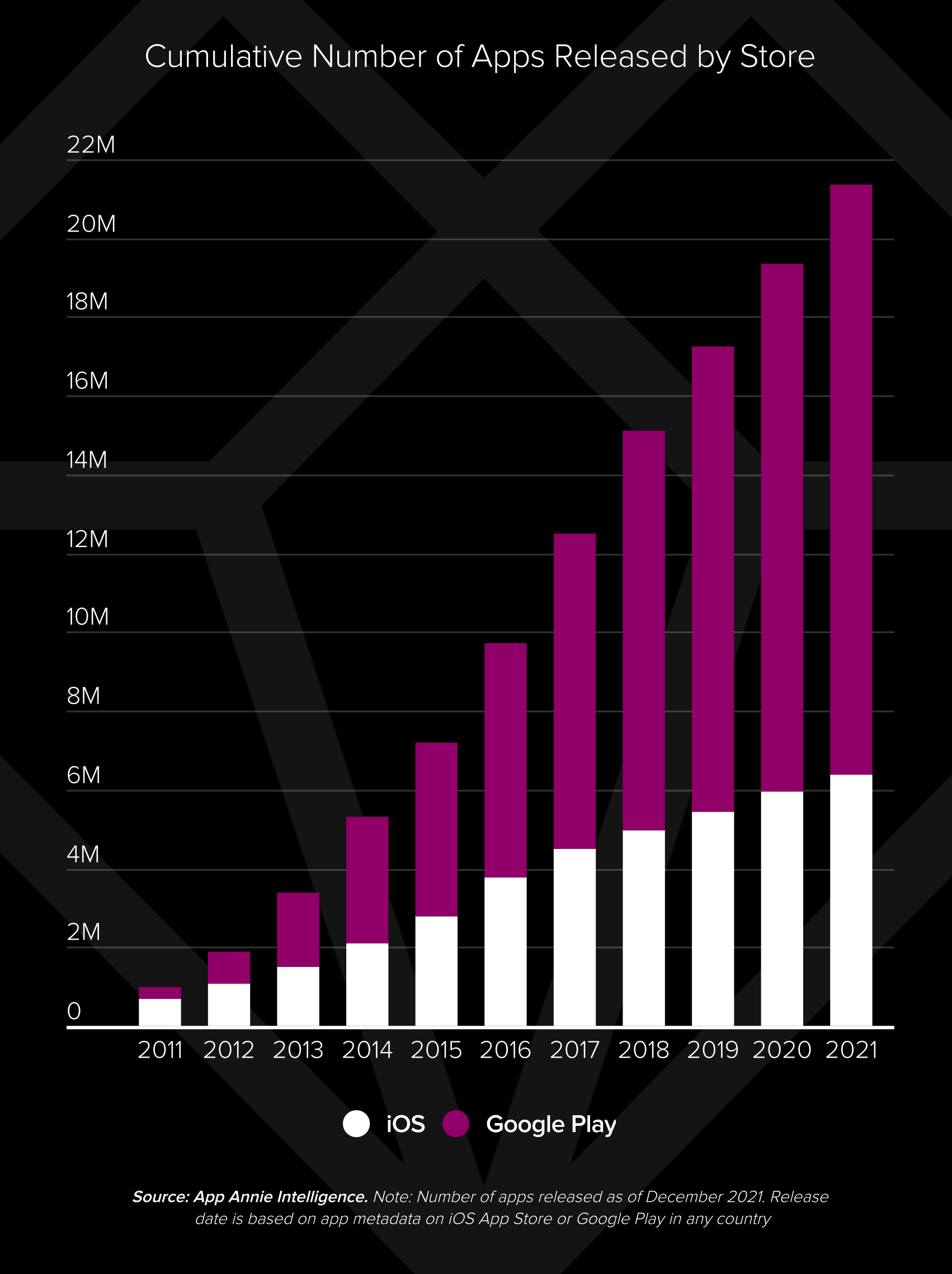
Source: App Annie State of Mobile 2022
Social media, video, and video
TikTok took the global media crown in 2021, surpassing Facebook and YouTube as the premier attraction. Social media and video apps together account for rouhgly 70 % of the time used on mobile devices.
The change was most drastic in China, where total streaming time fell by 46% from 2019 to 2021, but short video services Kwai and TikTok, which engage users more deeply, saw growth in excess of 200%.
For reference, the world’s most followed TikTok user is @charlidamelio with 134 million followers. This would leave her out of the Instagram Top20, demonstrating the different nature of the TikTok platform.
Despite this setback, YouTube is doing well. In fact, it probably started making a profit some time ago, as it is second in global consumer spend right after TikTok.
YouTube and YouTube music have been able to attract over 50 million subscribers, which would mean a revenue of around 5 billion dollars, assuming at least $100 in annual spend per subscriber. And that’s not all. YouTube advertising is generating over $20 billion. Not too bad, Alphabet.
After these giants, Netflix stands out from the pack, while Amazon Prime and Disney+ are currently on an equal footing.
Strong growth for fintech and ecommerce
Finance app downloads grew by 28% in 2021 (year-to-year). This is an impressive change in a category which is not naturally boosted by people’s desire to spend time at home. App Annie names neobanks (Cash app, Venmo, Nubank) and crypto apps as the drivers of this growth.
The new trading apps, such as Binance, capture their audiences rather like games do. For instance, the average Binance user had 225 sessions in 2021. Compared to category volume leader PayPayl’s 8 sessions, that’s a huge difference in engagement!
Online shopping also continued to pull in more people than in 2020.
Globally, the time spent in shopping apps increased by 18%. App Annie also reported on the global balance of shopping this year, showing how APAC (mostly Chinese) retail brands are attracting Western customers.
For instance, 74% of shopping apps downloaded by French consumers were foreign in 2020 and 77% in 2021. Overseas merchants gained ground in the UK and Germany too.
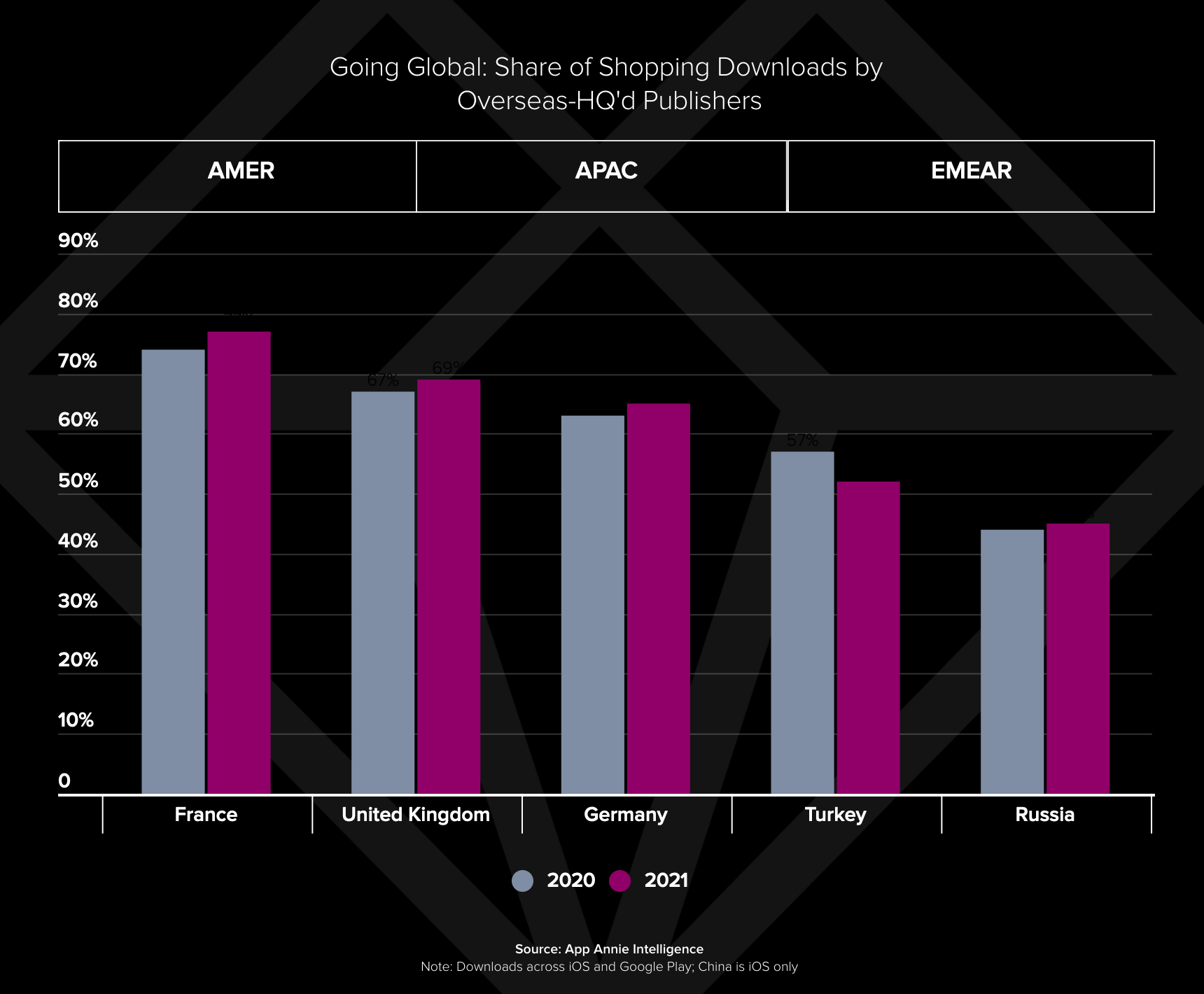
Source: App Annie State of Mobile 2022
Looking at individual shopping categories, the App Annie report highlights food & drink apps. Demand for food deliveries has increased during the pandemic, showing a 49% growth in sessions from 2020 to 2021.
The market in this category is hugely fragmented. No two companies from the global Top 5 list (Grab, Uber Eats, Foodpanda, Zomato and Swiggy) can be found in the Top 5 of any given market, and there are a lot of growing brands across all markets.
iOS 14.5 didn’t kill advertising revenues
The mobile advertising industry and Facebook took a hit from Apple’s privacy change, which removed an advertising feature from iOS in April 2021. Looking at the growth in advertising spend, this change hardly shows at all: ad spend was up 23% from 2020.
This was not surprising, as advertising investments tend to go where the users are.
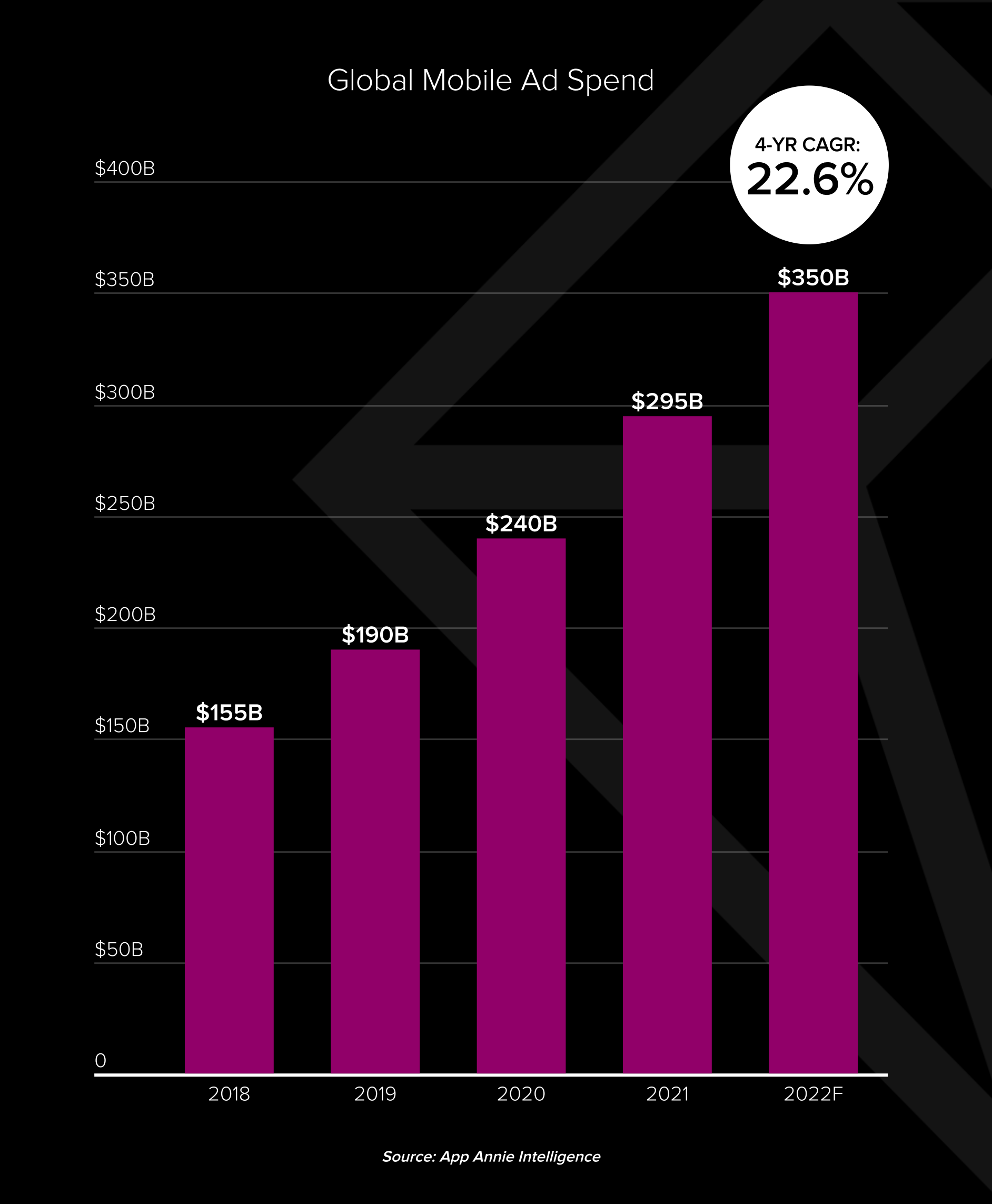
Source: App Annie State of Mobile 2022
Summary: Winding down
The world of mobile apps is complicated and evolving fast. It seems that consumers are expanding their use of mobile in several areas, with their attention shifting to shorter and shorter time spans. This is evidenced by the rise of TikTok and Kwai, as well as instant food deliveries.
Among all these hectic developments, it is nice to see that people are also using apps to improve their mental well-being. Two meditation-focused apps, Calm and Headspace, witnessed 27% y-to-y growth in consumer spend.
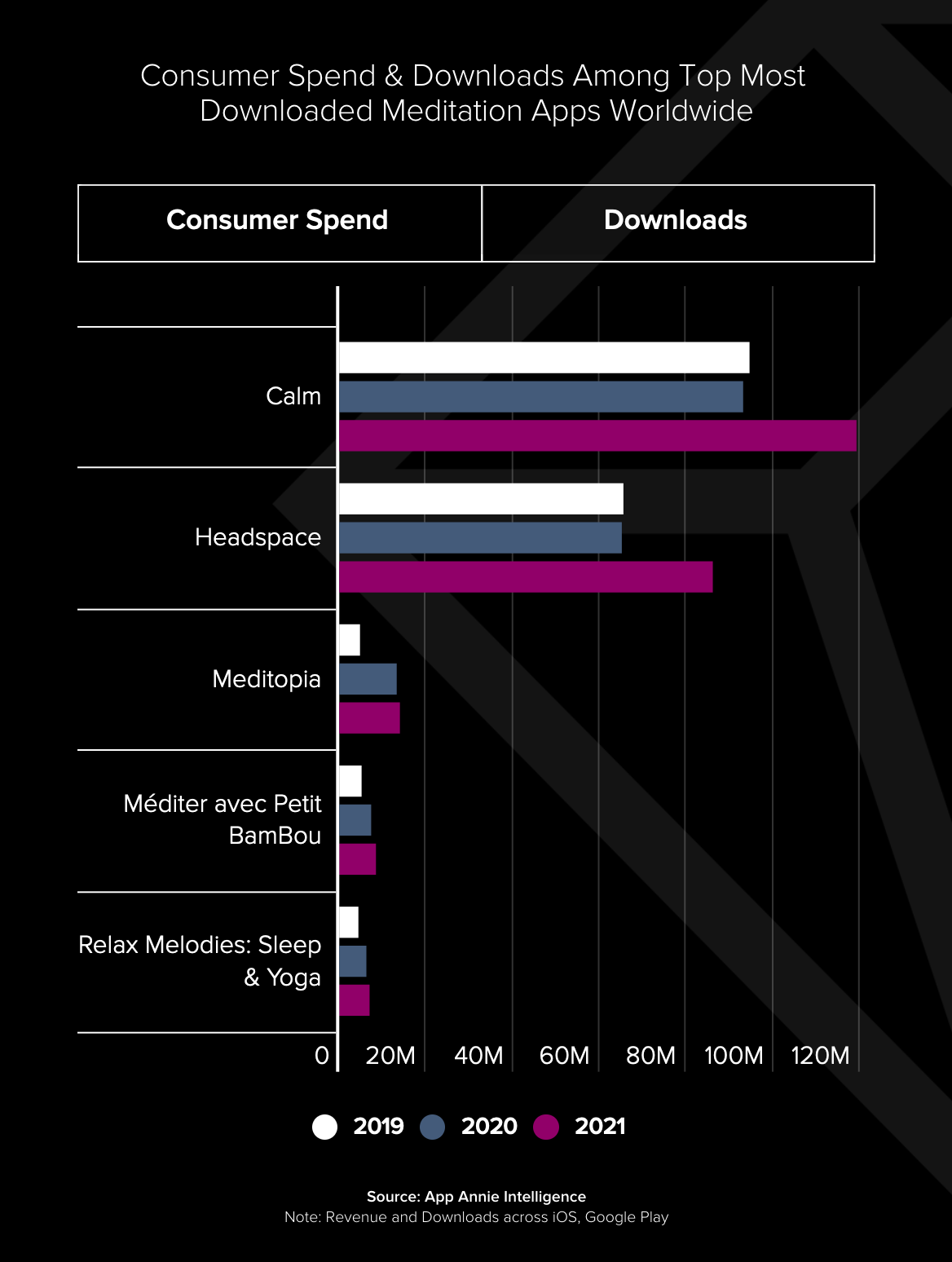
Source: App Annie State of Mobile 2022
From what we’ve seen, it’s a safe bet that mobile minutes are here to stay. Mobile devices are managing every aspect of our lives and keeping us entertained from dawn to dusk. That’s why everyone, everywhere in the world will have their mobiles to hand in 2022 too.
Illustration: Niina Nissinen


